Milada Horáková Park
/authors: (n-1)+LABAK+Terragram – Jakub Kopec, Michal Marcinov, Vladimír Sitta, Barbora Hrmová/in cooperation with: Magda Mikundová, Lucia Pecháčková, Katarína Stanislavová, Zuzana Včeláková/visualizations: Filip Hečko/2. prize in the landscape-architectural competition/Ostrava/2022
The proposal redefines the place and its character in a dialogue of history, present and future. Traces of history succumbed to the value crisis of past times. The result is a space surrounded by buildings of diametrically different typologies, which is best characterized by the anonymity of the word "greenery". At the same time, it is an extremely important place for the urban organism. Its identity comes from the trees, under whose aegis a lot can take place. The principle of resilience and long-term social acceptance of this place is rooted in the ability to adapt to future changes. At the same time, we are aware of the fact that this urban park can´t only be designed on a purely ecological basis, but must also be a place where nature meets our culture. Although our proposal is only a prediction, we tried to offer an open system, the final shape of which will be determined by the users. The aim of a democratic space must be to enable, not to prescribe. At the same time, the mission of this park can´t be fulfilled by mere objects and vegetation. Its curating plays a fundamental role in this regard. Not in the sense of control, but rather of initiating situations that will offer visitors cyclical events in the form of markets, exhibitions, musical and theatrical performances, sports tournaments, culinary competitions or feasts. According to our proposal, four layered urban landscapes of a symbiotic nature are gradually emerging here. Each has its own specific function, which osmotically affects the surrounding one.
1) The Programmable Membrane creates a continuous space that is an active interface to the surrounding city (28th October Street and Varenská Street) and other urban landscapes (Garden of Silence, Medicinal Gardens and Central Park). Unlike a "static" park, the membrane becomes a place of (ex)change. A place whose appearance will be co-defined by its visitor. This city promenade is perforated by bays and archipelagos of different temporality. It enables the regular organization of markets, pop-up events, music productions or art workshops, and as well as provides play equipment for children or café and refreshment spots, including sanitary facilities. Part of the membrane is also the House of Culture with the Concert Hall, for which it creates an adequate entrance area. The surface is considered to be polymer-stabilized gravel in combination with poured and synthetic materials (entrance and relaxing areas, bicycle path). The northern edge along Varenská street, supplemented with an alley of trees, will allow temporary parking during selected events.
2) The Central Park is a quiet zone (inside the Programmable Membrane) where the designer's hand is less apparent. Park paths are reduced to a minimum, natural routes of movement are preserved and supplemented with new communication links between the various attractions of the park. The central object of the park is the House of Culture with the Concert Hall, whose originally designed modest water surface is extended to a large water mirror and literally draws the reflection of the Concert Hall into the park. The footbridge over the water area will offer not only an attractive view of the Concert Hall, but also a sensory experience of apparent walking on water. On the site of the defunct cubist crematorium, a pavilion is designed as a homage to its author Vlastislav Hofman. This small cultural building reinterprets the flame motive, applied in the cubist painting of the crematorium, into a folded plate structure, formed by a single metal surface assembled without waste. The existing artworks remain an integral part of the park.
3) The Garden of Silence on the area of the former Jewish cemetery commemorates the presence of thousands of buried people. A linear monument consisting of 318 stelae (318 Abram's men, see Genesis 14:14) is erected along its perimeter. In the parallel view, it creates a wall, reminiscent of the Jewish tombstones that have deflected over time, and in the front view, they leave the space open. In the historical alleys, supplemented with younger trees, the original tracing of the cemetery paths is indicated by stepping stones. The park's subsequent routes are restored (in a polymer-stabilized recycled gravel surface) as a relic of dealing with a historical legacy during the last decades. The garden will be developed in cooperation with the Jewish Religious Community of Ostrava.
4) The Medicinal Gardens are an intermediary between the park and the hospital. Formally they resemble a necklace of gardens, not unlike the type known as hortus conclusus. Spatial arrangement enables the restoration of vegetation areas around the hospital buildings in stages. New hedges, or trellises, not only demarcate the hospital area, but above all the individual intimately conceived gardens, differentiated by their planting as well. A restaurant with a winter garden, accessible to patients and visitors, is being considered within the gardens. The cultivation of flowers and herbs for the needs of care for patients is a revival of the already forgotten medicinal garden. Great emphasis is placed on the haptic nature of the gardens, barrier-free access, protection from discomfort and sunlight, and comfortable furniture.
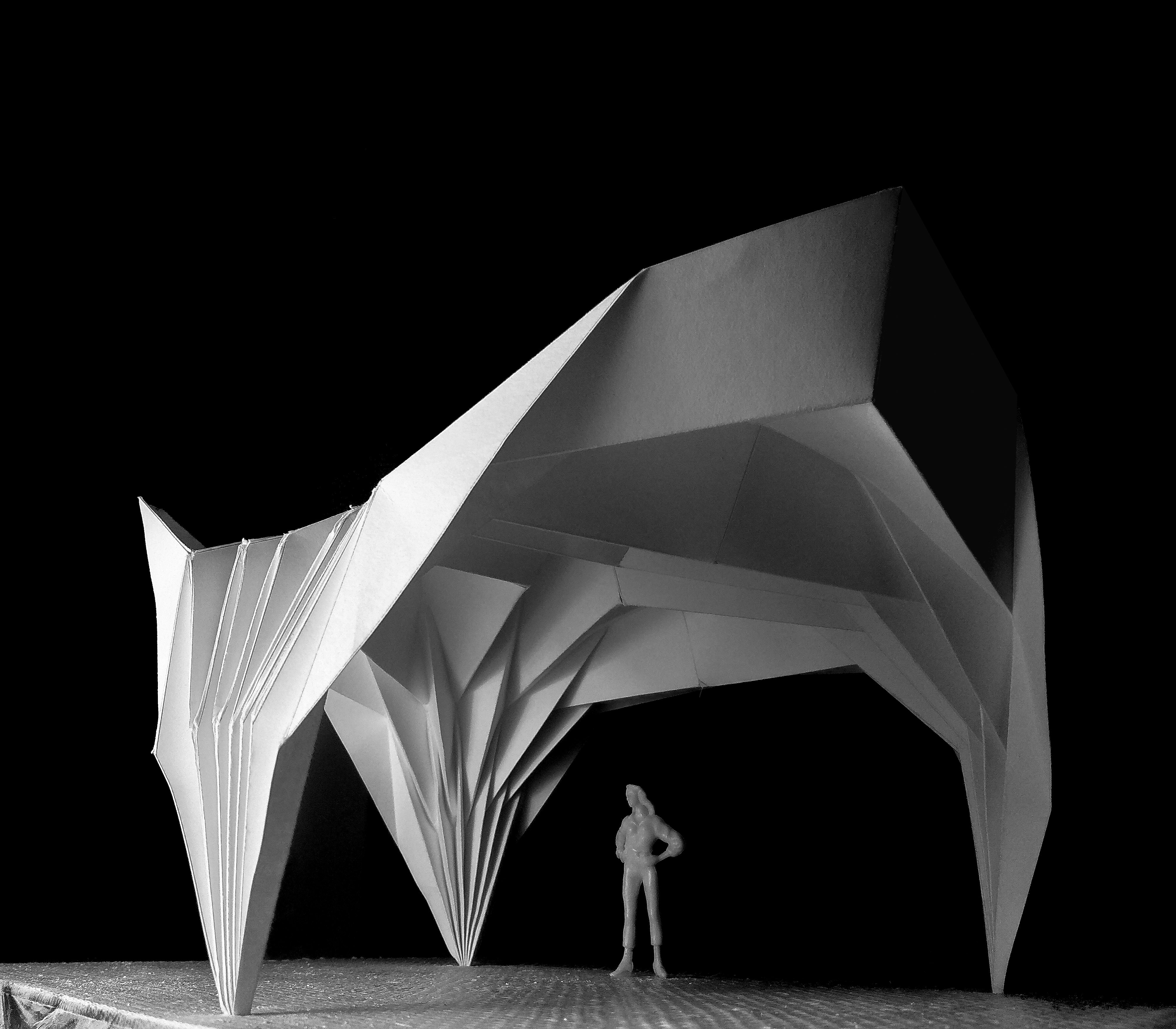
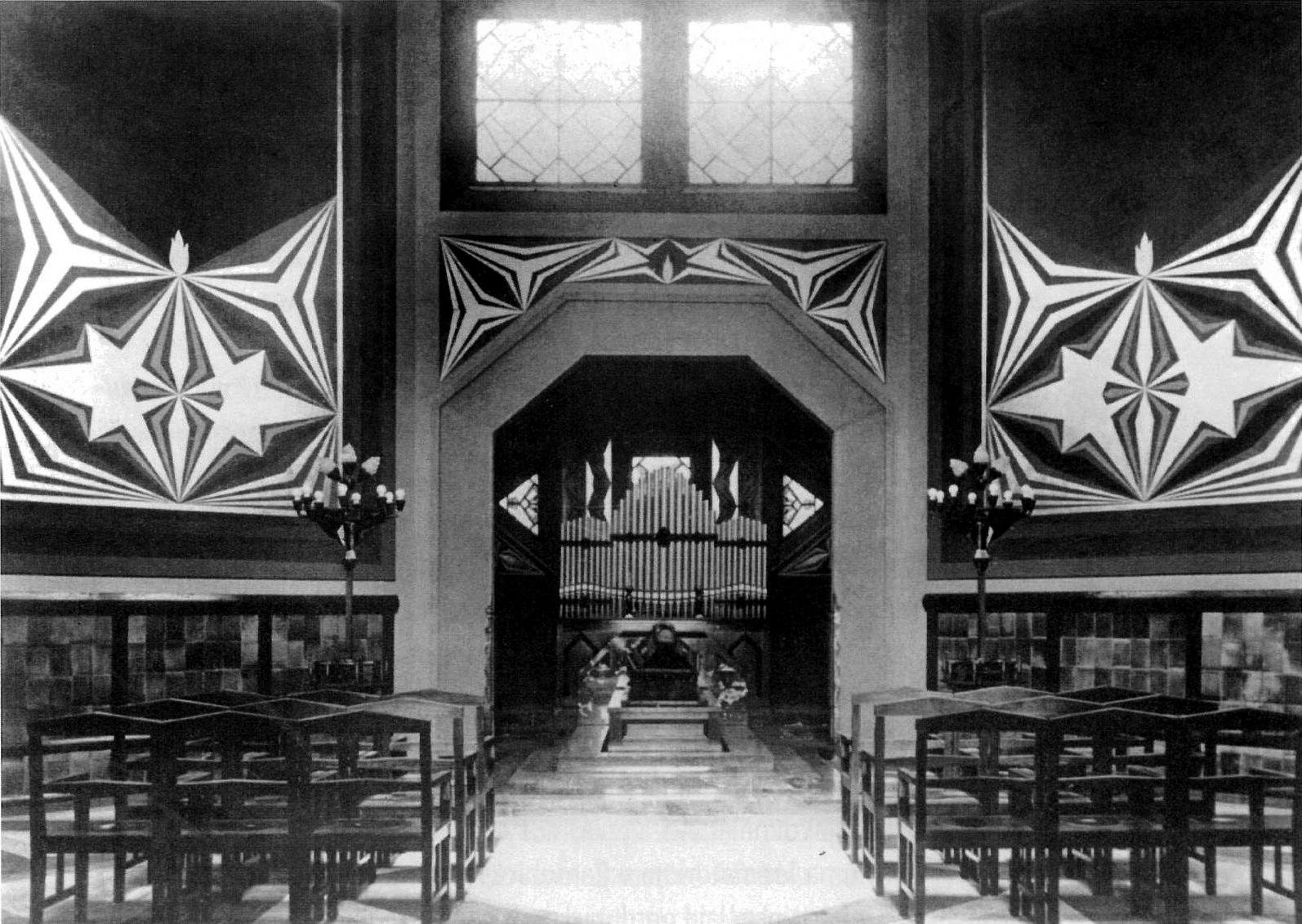

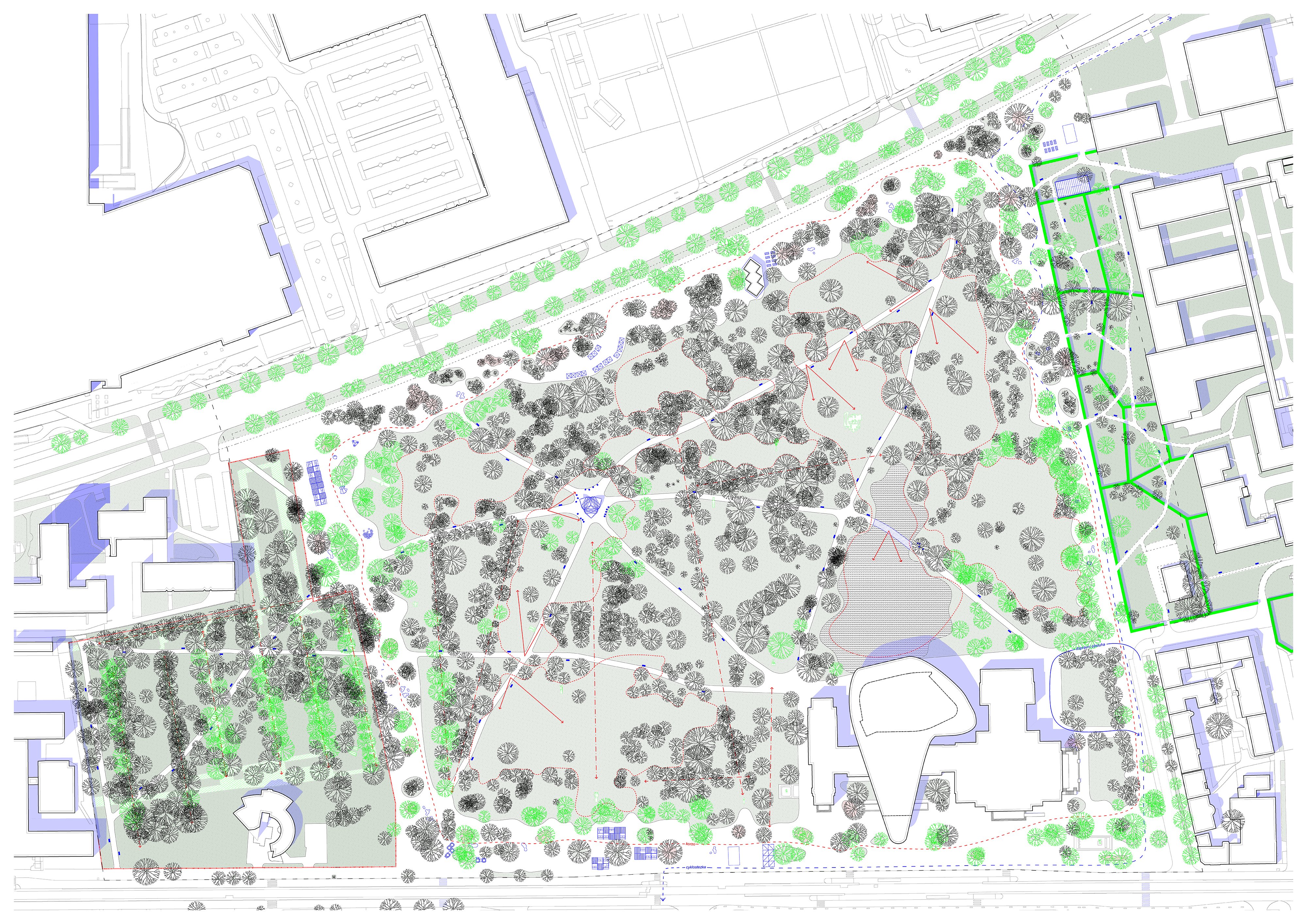

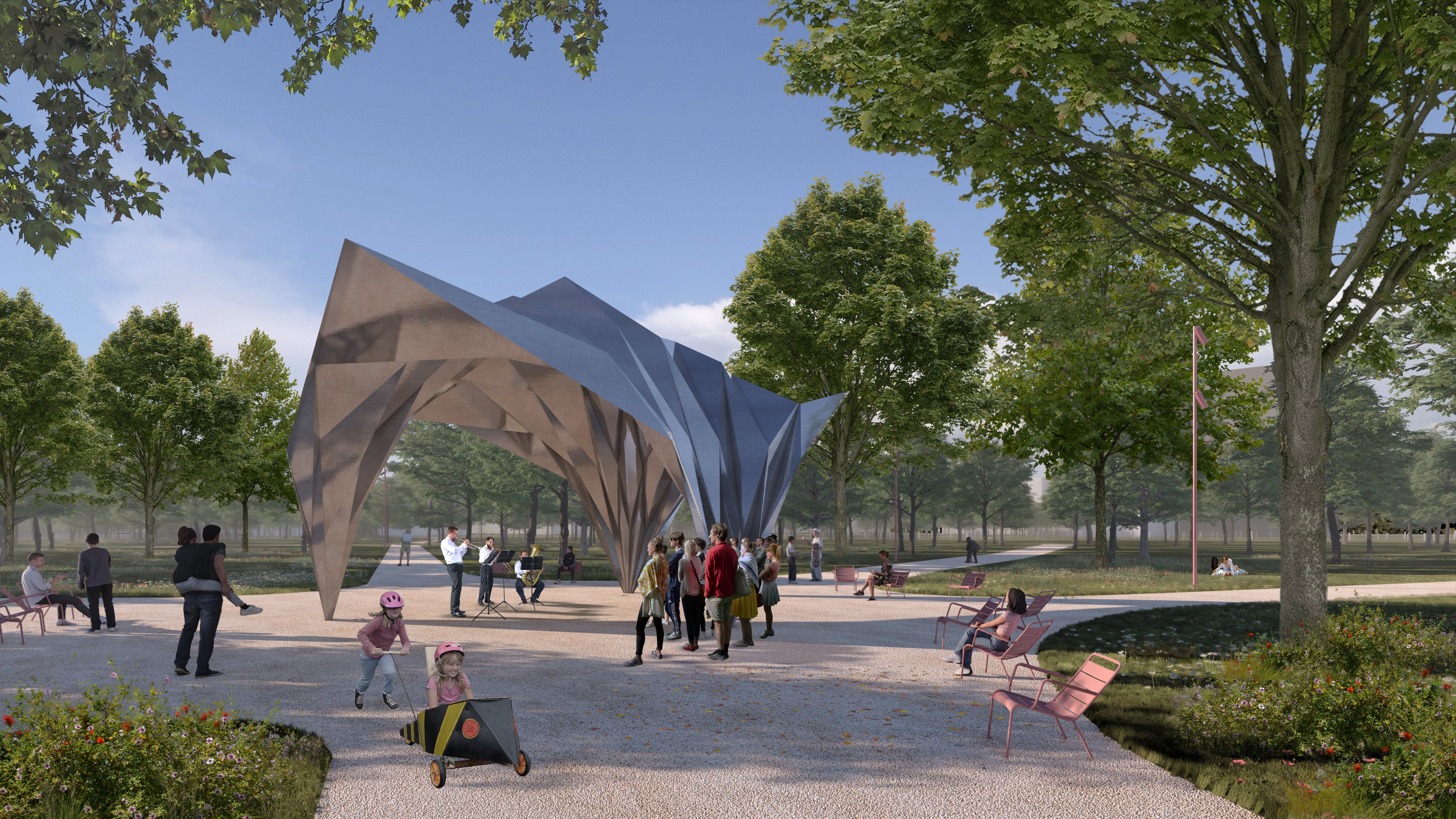
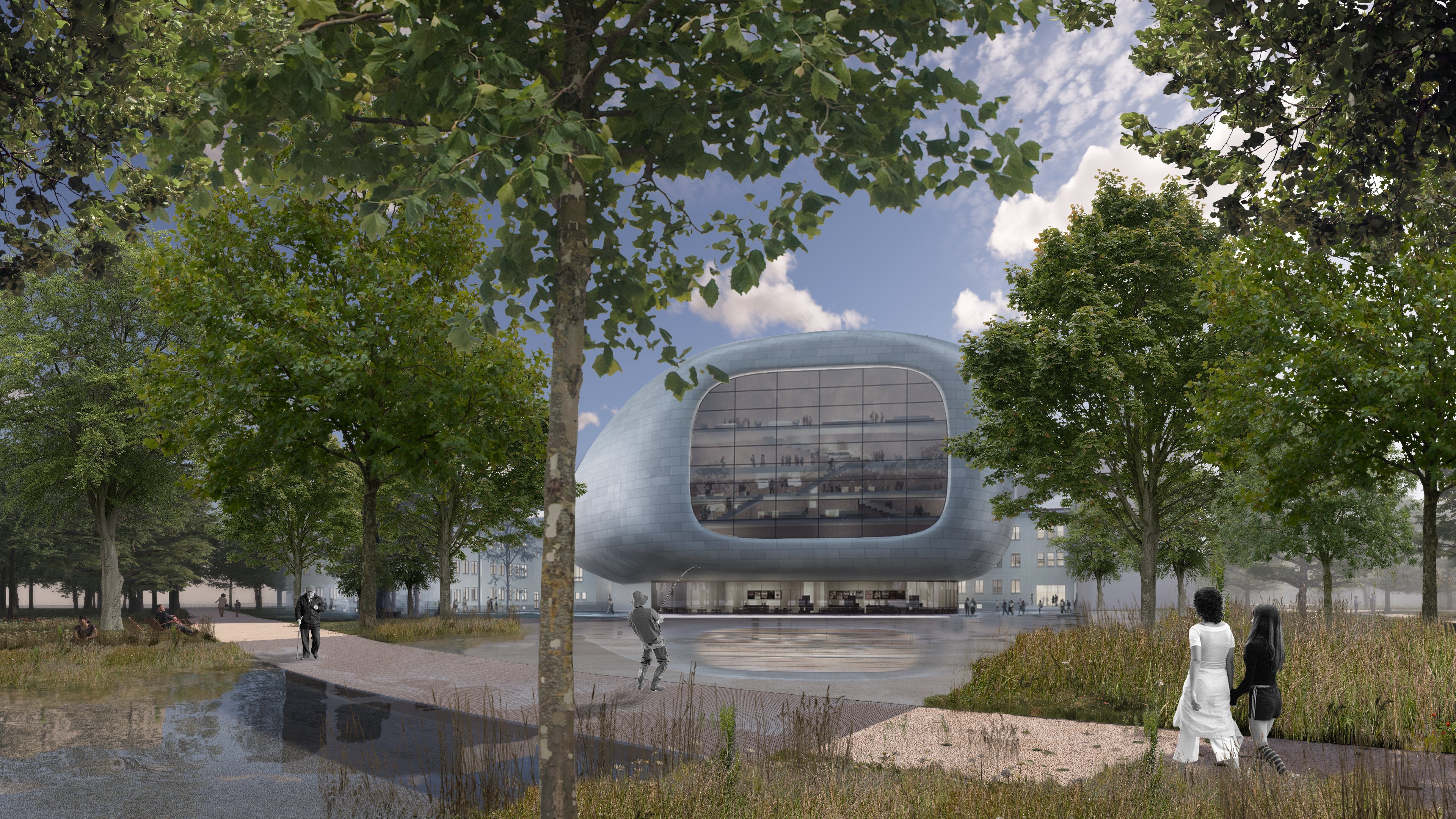
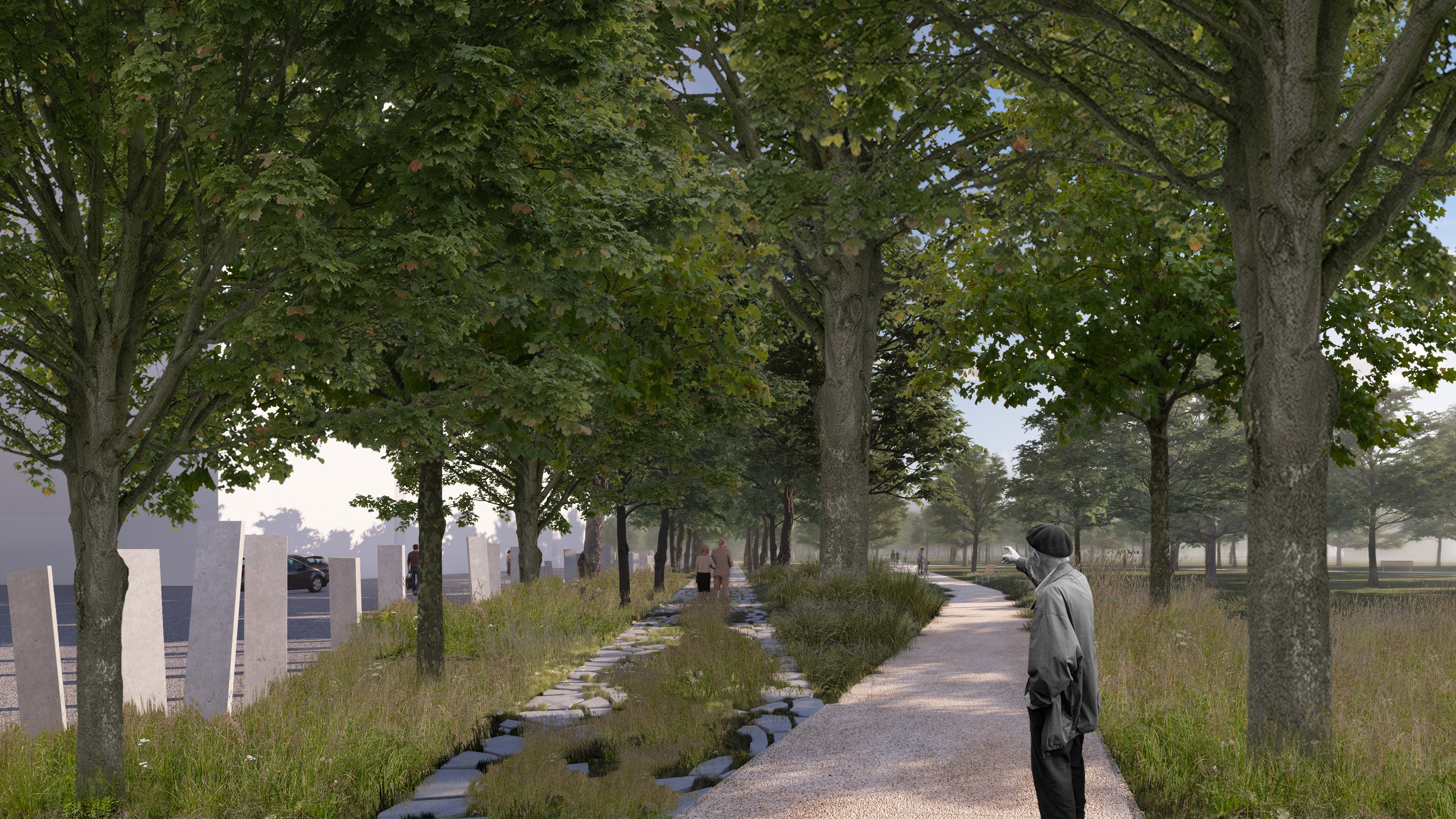
#model #public space #urbanism #layering #monument #pavilion #fold #architecture #garden #award #landscape #park